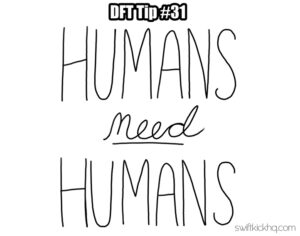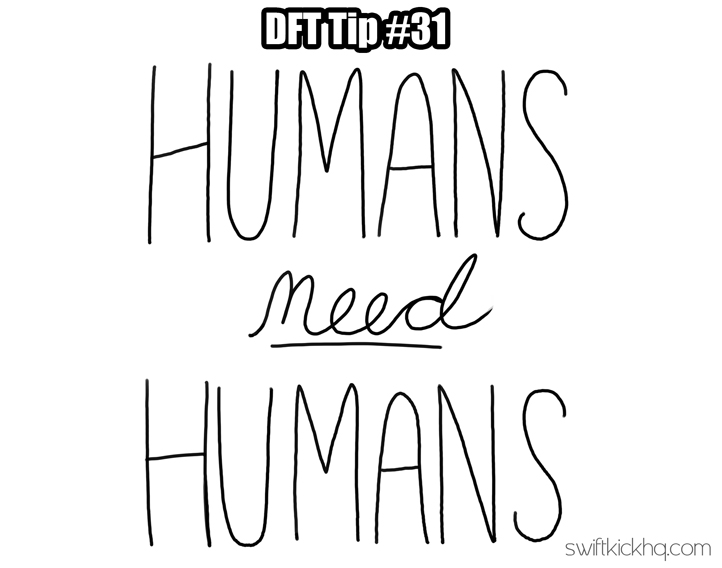About 200,000 to 800,000 years ago, a massive upgrade in technology occurred. It was a technology upgrade that allowed for individuals to create deeper social connections, retain and exchange knowledge, and cooperate together. Nobody witnessed this upgrade directly, however, because it happened inside the bodies of our ancient ancestors. The change occurred inside the brain, specifically inside the neocortex.
The Complex, Social Brain
In the long, evolutionary story that lead to us modern Homo Sapiens, the neocortex grew in size and complexity. This growth allowed them to teach each other how to make tools, coordinate hunting trips to take down large mammals, and collectively live together in communities. This sharing of resources reduced the burden on any one person. At some point in history, the evolutionary light bulb came on to realize that we truly are better together.
While 200,000 years ago might sound like ancient history, evolutionarily speaking, it’s last week. We have a brain structure that is very similar to early Homo Sapiens. Just as our ancient ancestors were hardwired to socially connect, so are we in this hyper advanced world.
That’s why underlying everything we talk about in all of our content is the reminder that we are human and the people we interact with are human. They come to the table with a deep social desire to not only connect and belong, but also to be understood and appreciated. Therefore, every situation we find ourselves in includes a choice in how we interact with each other.
“For the most part, life involves people. That is obvious in the sphere of relationships, such as friendship, family, marriage, and community. But, we are often unaware of how big the people part is in getting work done as well.” – Henry Cloud, Integrity: The Courage to Meet the Demands of Reality

“When your organization becomes more human, more remarkable, faster on its feet, and more likely to connect directly with customers, it becomes indispensable.” – Seth Godin
In every situation, we have the option to operate with two different hats on. One hat is the Technical Hat and the other is the Human Hat. I call this the Two Hat Theory.
TECHNICAL HAT
We are wearing our Technical Hat when we operate by the book, almost in cruise control. The Technical Hat is programmable and doesn’t allow for any flexibility until it is reprogrammed. The Technical Hat is efficient, it uses less energy, and makes fewer technical mistakes.
If we lived in a world of only robots, the Technical Hat would rule. But we don’t, and to operate with only a Technical Hat is a serious red flag because on the other side of any interaction is a human: a human with hopes, fears, dreams, and anxieties. This is where The Human Hat comes in.
HUMAN HAT
The Human Hat allows you to interact with someone on a human-to-human level. It allows you to feel them, know them, and understand them. When connecting with someone on a human level, you can better know why they are reacting the way they are. The connection matters regardless if the other person is a co-worker, manager, client, community member, prospective client, etc. After you allow yourself to empathize and think about the situation from the other person’s perspective, maybe you’ll realize they are reacting to a stupid policy. Or maybe they don’t understand and need you to better explain it to them.
Whatever the reason, you won’t know unless you are wearing your Human Hat. Empathizing using The Human Hat is such a critical skill, that a study done by the Development Dimensions International (DDI) found that empathy is the single most important leadership skill needed today.
“The more we can empathize with coworkers, clients, and even superiors, the better we will be able to understand them. Having understood them and seen them for who they are, we will be able to figure out how best to engage in compassionate activity and create change based on what needs to happen, as opposed to our ideas about what needs to happen.” Lodro Rinzler, The Buddha Walks into the Office: A Guide to Livelihood for a New Generation
TWO HAT THEORY
The rules are simple:
- We need both hats to succeed.
- The more you connect with someone using your Human Hat, the easier it will be to operate with your Technical Hat.
- The less you connect with someone using your Human Hat, the harder it will be to operate with your Technical Hat.
Why does this matter? According to RightNow Technologies, “73% of customers fall in love with a brand because of friendly customer service representatives.” The Technical Hat doesn’t employ friendliness. That’s the job of the Human Hat. Need an example? Read my story of the flight attendant who made me fill my water canteen in the silliest way during a flight.




